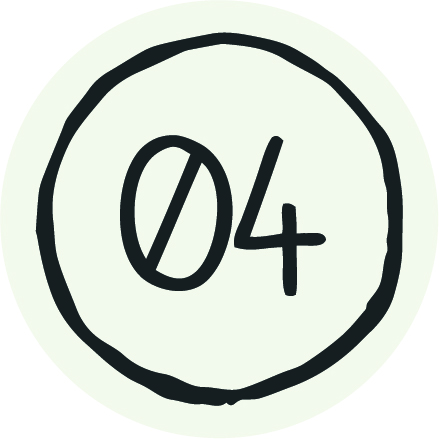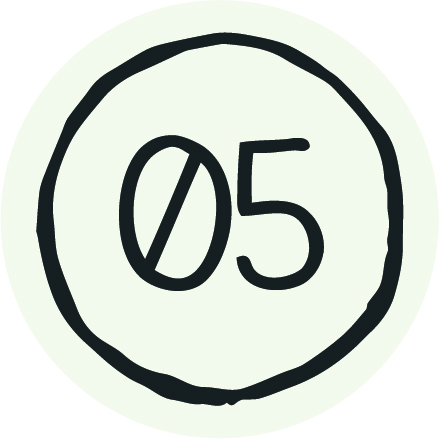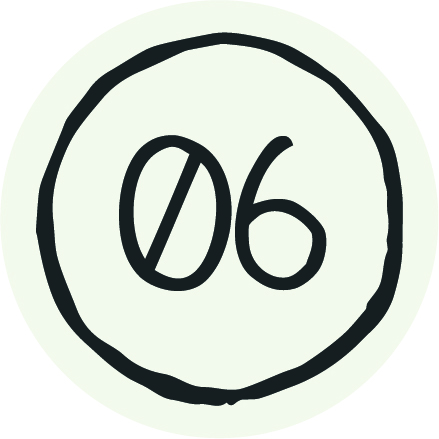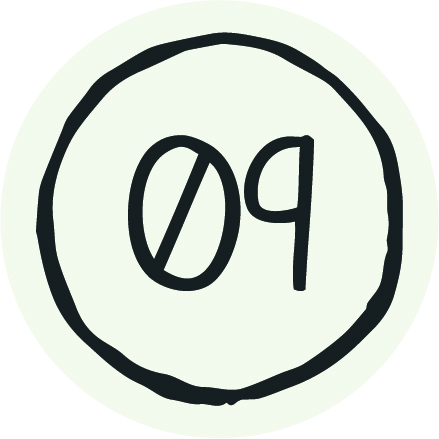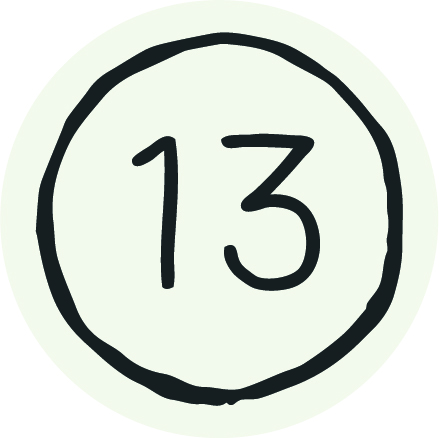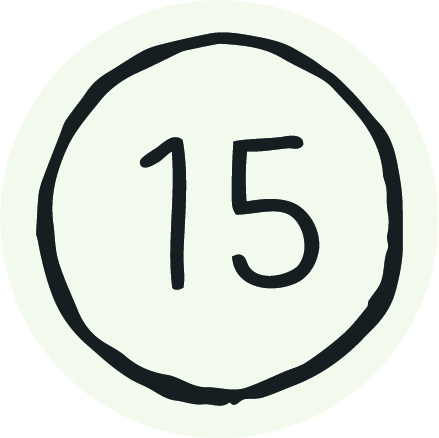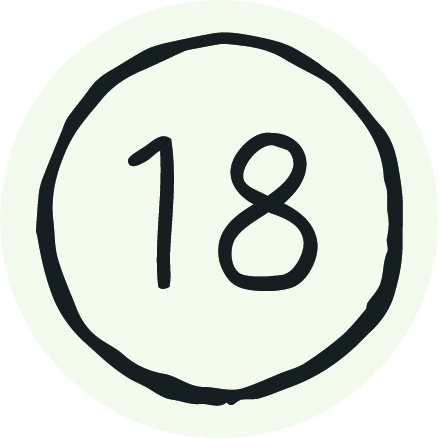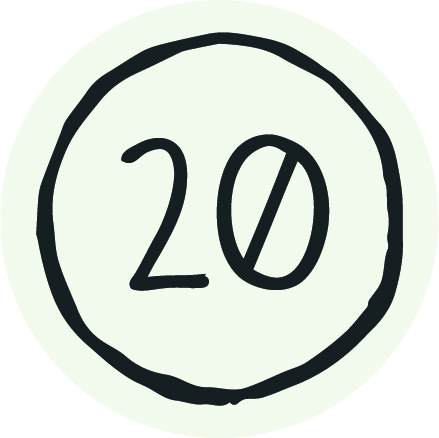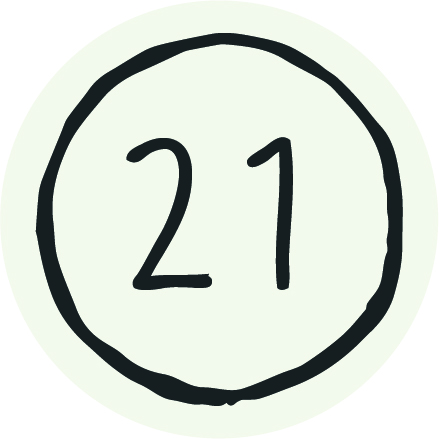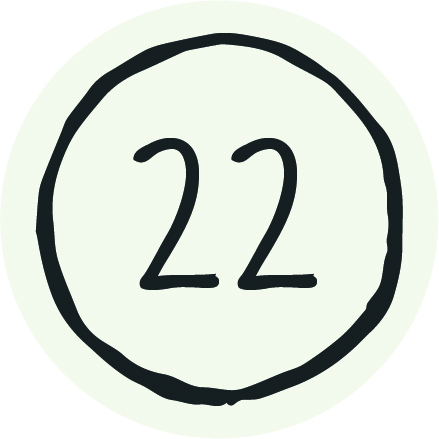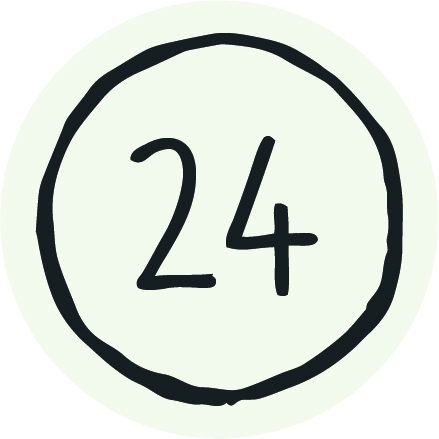
Mamu Corner
A window to Indigenous cultural wealth
This exhibition features a range of artifacts and artwork - all gifted to the school or acquired in various circumstances - that showcase the history, traditions, and contemporary lives of indigenous communities. Each object presented tells a unique story. It is an invitation to embrace the wealth of Indigenous nations, communities and people who belong to the land we now call Quebec; to challenge commonly held stereotypes or misconceptions as well as recognize their invaluable contribution to our shared history. Some pieces are decorative and artisanal, some are practical and still used today, but all represent certain core themes related to Indigenous ways of life.
This exhibition is dedicated to the fostering of a more inclusive and equitable society through understanding, empathy, and respect by celebrating the rich cultural heritage of Indigenous Peoples.
To interact with the exhibition, we invite you to take a moment with each piece. Then, simply scan the QR code corresponding to each item with your smartphone and you will be directed to the dedicated website which will provide descriptions, anecdotes and additional resources related to the piece.
We hope that by immersing yourself in this educational exploration, it will inspire you to deepen your understanding and appreciation of Indigenous Peoples as well as honour their legacy that has shaped the land we walk on today and endures through the generations. Never forgetting that displays such as these cannot replace real human relationships, we hope that it will entice you to go visit the nearest Indigenous community, Indigenous Friendship Center or Indigenous cultural site or museum to foster sincere relations with the people that represent these cultures.
If the journey starts here, we hope that it certainly won’t end here!
Something to bear in mind
The following descriptions reflect only the thoughts of the people who took part in writing them. Although these people have drawn on many sources of information, there is such a wide diversity of indigenous thought, culture and tradition that these descriptions cannot take them all into account. Also, among the resources shared in this display, information and terminology may vary. Throughout the world and this land, different territories are home to different Indigenous nations which may have different terms to describe Indigenous identity. Moreover, it is often the case that even with agreed upon terminology in a given context, individual Indigenous people will have their own preferences for the terms by which they want to identify themselves. Reappropriating culture and identity is far from a simple process. It is a movement happening on the global level for all First Peoples which implies many political, cultural, generational, geographic, historical, linguistic and personal factors. The complexity of which requires understanding and conscious effort on the part of non-Indigenous people to learn and use the evolving official terminologies which communities decide for themselves as much as the ones preferred by an individual Indigenous person. In any case, it requires time, respect and openness expressed through authentic relationships.
Additional General Resources:
1. Dream catcher
Various names in traditional languages
This impressive dreamcatcher, gifted to the school from the Saguenay Mamik Center (previously known as the Indigenous Friendship Center), represents many values related to the holistic perspective of life and relations as well as the spiritual significance of dreams to connect to intuition and foresight. The dreamcatcher is one of the most widely known and recognizable Indigenous artisanal pieces and can vary in size and adornments but will consistently have woven netting in the center of a metal or wooden circle with dropping adornments on the bottom.
It is unfortunate that sacred objects such as this one have not always been appropriately used/constructed/sold or have become the stereotype of Indigenous identity as being one monolithic culture. While holding special significance for many Indigenous individuals, communities and nations, the meaning of the dreamcatcher will vary and differ from the commonly held ideas about it. The hope is that this piece can ignite awareness of the kind of feelings and images that this object generates at first, followed by the curiosity to deepen further with more accurate and complete knowledge beyond bias.
2. Boots
Kamik in Inuktitut
These artisanal boots are adorned with intricate stitching and beading patterns as well as colorful tassels to catch the admiring eye who can appreciate quality craftsmanship. The kind of embellishment seen here goes the extra mile and isn’t necessarily found on every pair. Less with the intent to blend into one’s surroundings, beauty can be used as an expression of beauty itself or as it is here, to set a piece apart for the interested buyer. In such a case, the line between art and craft is blurred much to the onlooker’s delight and surely to that of the wearer. Higher than moccasins but just as soft and quiet, the design of this kind of footwear is well suited for hunting or generally moving through nature inconspicuously.
3. Beaver skin
Atai in Innu
This piece from the Huron-Wendat community of Wendake is an artisanal and more decorative display in itself of the beauty and importance of animal hide, the beaver in this case. It is an invitation to contemplate the complex and arduous process of treating and tanning animal hides as well as the respect for the animal imbued in Indigenous hunting practices.
The piece also represents much of what was traded with Europeans during first contact. Yet, it invites the viewer to reflect on modern practices of consumption and production contrasted with traditional approaches to the life of the animal.
It is important to note that for most Indigenous Nations, hunting practices and conservation practices go hand in hand. Respect for the animal being hunted and the way it is used, the way its habitat is preserved and the way it is cared for: these practices do not contradict one another in traditional hunting practices because hunting is not fragmented from the importance of the life of the land as a whole. This is why traditional Indigenous practices like these will often be defined as holistic. Far from being antiquated, society now increasingly turns to Indigenous Peoples as the land protectors who will guide environmental conservation for the future.
4. Feathered Lance
Various names in traditional languages
Most will be familiar with the hunting and protective uses for the lance. This lance, however, is adorned very particularly with its magnificent beadwork, stitching and string of sacred eagle feathers attached from end to end. It would likely belong to a highly respected elder for community gatherings and spiritual purposes. The piece comes from the Atikamekw community of Wemotaci.
It is important to note that for most Indigenous Nations, hunting practices and conservation practices go hand in hand. Respect for the animal being hunted and the way it is used, the way its habitat is preserved and the way it is cared for: these practices do not contradict one another in traditional hunting practices because hunting is not fragmented from the importance of the life of the land as a whole. This is why traditional Indigenous practices like these will often be defined as holistic. Far from being antiquated, society now increasingly turns to Indigenous Peoples as the land protectors who will guide environmental conservation for the future.
5. Aurora borealis
Various names in traditional languages
This photograph taken by Dany Castonguay captures the special time of day when the aurora borealis filled the sky above the teepee set up in his backyard in the Eeyou (Cree) community of Chisasibi, during his first year teaching in 1999.
6. Snowshoes
Asamak in Atikamekw
It is important to recall how much Indigenous innovation continues to imbue modern life, without which survival would have been impossible. Another example of such innovation is snowshoes as displayed here, acquired from the Raquettes Gros-Louis shop in the Huron-Wendat community of Wendake.
7. Walking Out Ceremony Dress
One can immediately notice the small size of this beautifully decorated dress as it is intended as a traditional garment to be worn by a little girl during the ceremony to officially take her “First Steps” as a member of the community and her Nation (or a “Walking Out” ceremony). The dress itself was made commercially with many replicas, yet the piece is no less special due to its significance.
The First Steps rite of passage is an eagerly anticipated event of special importance for the children of many Indigenous Nations. This particular dress was worn by Julia Castonguay, the daughter of Dany Castonguay, for her ceremony. The pendant she also wore was passed down by her grandmother Annette Nepton.
8. Talking Stick
Various names in traditional languages
A talking stick can be like the one displayed here, but the term can be applied to any object which can have a special significance that has been deemed appropriate to fulfill the function of a talking stick. This particular piece comes from the Atikamekw community of Wemotaci and has been adorned and decorated artisanally which includes the colors of the medicine wheel.
When a talking stick is used in a talking circle, it is a process by which a group can discuss together with equity and respect. An understanding is established whereby only the person holding the talking stick can speak and others must listen. It often accompanies a sharing circle in which it is passed around so that everyone can have a chance to speak. The sharing circle along with the talking stick are tools for the wellbeing of collective and personal life with purposes varying from healing to governance or decision-making.
9. Tomahawk (Hammerhead)
Utamaikan in Innu
The particular version of the Tomahawk seen here functions more as a hammer and was intended to be used as a tool (ex:. nailing down tent spokes, securing various pieces together etc.)
When this tool has been depicted in popular media, most often the emphasis is placed on it being an instrument of war and violence but like many innovative tools across times and cultures, they can be weaponized if the intention is to do so. Here, we choose to focus away from the stereotype and on the initial intention behind the tool’s utility.
The Tomahawk occupies a wide cultural region as it does not so much belong to one nation in particular but is traditional to many of the nomadic nations belonging to the Algonquian linguistic family.
10. Tomahawk (Axe Head)
Akatash in Innu
The particular version of the Tomahawk seen here functions more as an axe and was also intended to be used as a tool (ex: to chop firewood, to sharpen the ends of teepee poles planted in the ground etc.).
11. Mittens
Mictikawin in Atikamekw
The Eeyou (Cree) nation is the largest producer of these kinds of mittens. These mittens are commercially made from real moose hide and are essential for survival. What protects the hands protects everything else. They were donated by Miss Martine, a collaborator of the Riverside Regional School.
12. Sculpture
This sculpture was made from caribou antlers and an eagle foot by an artisan as a token from a doubly fruitful day of hunting. Only the caribou was intended for the hunt and the eagle was found. Therefore, the sculpture was created to honour that gift of abundance.
Eagles are not hunted and neither are their feathers. For many, the significance of the eagle feather is powerful and representative of many core values in Indigenous communities and a link to Indigenous heritage. One only acquires eagle feathers when the eagle decides to offer it.
It is important to note that for most Indigenous Nations, hunting practices and conservation practices go hand in hand. Respect for the animal being hunted and the way it is used, the way its habitat is preserved and the way it is cared for: these practices do not contradict one another in traditional hunting practices because hunting is not fragmented from the importance of the life of the land as a whole. This is why traditional Indigenous practices like these will often be defined as holistic. Far from being antiquated, society now increasingly turns to Indigenous Peoples as the land protectors who will guide environmental conservation for the future.
13. Quiver with Arrows
Various names in traditional languages
This Eeyou (Cree) quiver or bow case made from gray fox hide formed an ensemble with the headdress also displayed acquired from the Mishk Artisanal Shop in Mashteuiatsh*. The piece, uniquely embellished to honour the traditional form and importance of hunting as an essential means of survival, also includes 3 artisanal arrows.
It is important to note that for most Indigenous Nations, hunting practices and conservation practices go hand in hand. Respect for the animal being hunted and the way it is used, the way its habitat is preserved and the way it is cared for: these practices do not contradict one another in traditional hunting practices because hunting is not fragmented from the importance of the life of the land as a whole. This is why traditional Indigenous practices like these will often be defined as holistic. Far from being antiquated, society now increasingly turns to Indigenous Peoples as the land protectors who will guide environmental conservation for the future.
14. Headdress
Various names in traditional languages
Acquired from the Mishk artisanal shop in Mashteuiatsh*, this impressive Anishinaabe headdress is not liberally worn by just anyone or in any context. Most often, this kind of headdress is gifted to a member of the community who bears a particular importance or responsibility to be worn during ceremonies or Powwows. The one displayed here is particularly striking for the large number of eagle feathers that line the contour of the piece. In Indigenous communities, Eagles are not hunted and neither are their feathers. For many, the significance of the eagle feather is powerful and representative of many core values in Indigenous communities and a link to Indigenous heritage. One only acquires eagle feathers when the eagle decides to offer it.
15. Birch Bark Basket
Wikwamotai in Atikamekw
This basket made from birch bark was crafted by Real Quitich from the Atikamekw community of Manawan. It can have many uses but most likely would be used for gathering berries, herbs and roots. The symbolism of the turtle design etched into the side goes far beyond the representation of an animal as it is in fact not a local animal. For many Indigenous communities, the symbolism of the turtle calls to mind the creation story of Turtle Island that seems to have traveled all the way to communities on this side of the continent.
16. Birch Bark Basket Cover
The cover of the bark basket is displayed distinctively here simply to be able to admire the design and craftsmanship etched into it which would otherwise go unnoticed if the basket were to sit more naturally with its corresponding cover on top.
17. Tamarack Goose decoy
Niska (goose) in Eeyou (Cree)
This skillful tribute to the goose made from Tamarak (Larch) is not only decorative but is used in traditional James Bay Cree hunting practices to lure Canada geese to come closer to the ground as they recognize the shape in the white snow from above as one of their peers feeding during their spring and fall migration. The Cree nation being traditionally nomadic, the goose was a reliable source of food and was therefore a sacred means of survival which continues to be celebrated year after year. The sculpture comes from the Eeyou (Cree) community of Waskaganish and was acquired from the Mishk artisanal of Mashteuiatsh*.
It is important to note that for most Indigenous Nations, hunting practices and conservation practices go hand in hand. Respect for the animal being hunted and the way it is used, the way its habitat is preserved and the way it is cared for: these practices do not contradict one another in traditional hunting practices because hunting is not fragmented from the importance of the life of the land as a whole. This is why traditional Indigenous practices like these will often be defined as holistic. Far from being antiquated, society now increasingly turns to Indigenous Peoples as the land protectors who will guide environmental conservation for the future.
18. Moccasins
Massin in Innu
These moccasins were gifted by the Mishk artisanal shop in Mashteuiatsh* made by hand by elder Anne-Marie Saint-Onge. The choice of design to adorn the moccasins with stitching and beading is where the creativity of the artisan can shine to set the cultural object apart. In this vein, Europeans doing trade with indigenous communities would equally be drawn in by design, adornment and color.
19. Miniature Bark Canoe
Wikwas Tciman in Atikamekw
This miniature model of the canoe made from bark and acquired at the Mishk artisanal shop in Mashteuiatsh* represents an innovative and essential means of transportation through the natural water highways of the land for many Indigenous nations. Both withstanding the passage of time (and the aggressive restrictions of colonization) for thousands of years until today, while also symbolizing the key to opening the possibilities of an expansive life between Indigenous communities and trade with Europeans.
It is one of many achievements of Indigenous engineering imbued with the quality of balance (which one can certainly appreciate first hand if given the chance to climb into a canoe). The physical balance of the object achieved through masterful application of physics reflects a much larger and holistic balance between human beings and the land; moving through it with humility, respect and minimal impact.
20. Teepee
Innutshuap in Innu
This small-scale decorative Teepee represents one of several forms of impressive Indigenous engineering suited for a nomadic lifestyle. (As opposed to structures like longhouses which come from more sedentary nations). Traditionally, the poles are made from wood and the walls are made from animal hide in the winter or bark in the summer. Modern versions sometimes involve metal poles and canvas sheeting with room for a wood-burning stove. The floor on the inside is often covered with fir branches or animal hides for insulation, dryness and comfort. The Teepee originally comes from the Lakota Nation but belongs to diverse Indigenous nations due to years of cultural exchange as is often the case with other traditions, tools or artistry. It is important to note that many other variations of lightweight and easily transportable traditional homes similar to this one were and still are used in ceremony or to camp, especially among the Algonquian Linguistic Family. The way they are built, what they are called and how they are used varies between nations and communities.
Here are some examples of those traditional homes:
https://indigenousquebec.com
https://territoires-identites.com
https://www.thecanadianencyclopedia.ca
https://www.thecanadianencyclopedia.ca
21. Crooked Knife
Mukutakan in Innu
Mokatakan in Atikamewk
Perhaps the most unassuming, yet arguably one of the most important pieces on display is this Innu crooked knife. Hand sculpted from wood and iron - yes, naturally sourced iron. Not necessarily in this example, but traditionally, iron came from mines that had been discovered by Indigenous Peoples long before first contact with Eurpoeans.
This unequivocally important tool was the key for surviving and thriving by many means including tanning animal hide and sculpting other tools.
The knife was acquired from the Mishk artisanal shop in Mashteuiatsh*.
22. Sacred Herbs (Sage and Sweetgrass)
Various names in traditional languages
Sage and sweetgrass are among 4 main Indigenous sacred plants (the other two being tobacco and cedar). These plants are used to infuse inspiration, purification, thanks, healing and more into a space or a moment according to the intention of a group or an individual. Not always, but often burned, the smoke of these plants is wafted through the air, sometimes with the help of a feather (often an eagle feather if one has the honour of receiving one, or a turkey feather as displayed here).
Not all of these plants are naturally occurring in the local areas surrounding the school. The common use of these sacred spiritual practices belonging to the 11 Nations of the land we now call Quebec is a result of the generous sharing and exchange of indigenous communities across land and time.
Acquired at the Gros-Louis artisanal and snowshoe store in the Wendat community of Wendake.
4 sacred herbs
https://www.youtube.com (american, explain use of word “tribe”)
Tobacco
https://www.youtube.com (Wapikoni Mobile FR)
23. Drum
Teueikan in Innu
The Indigenous drum goes beyond a musical instrument. It is also an instrument that gathers, that echoes the heartbeat, the pulse that proves that traditions are alive and so much more. They are made from stretched and treated animal skin and have features and mallets that vary from Nation to Nation. Bearing in mind that Riverside Regional School is on Innu and Atikamekw land, we offer their name for it. This particular drum on display was acquired in the Huron-Wendat community of Wendake but is an example of drums from the Eeyou (Cree) and Anicinabe Nations.
Larger drums that are played by many at once can be heard at gatherings like Powwows.
24. Totem
Artists : Ariane Parent (Wendat) and Vincent Dubé
This special piece was designed and painted by Ariane Parent, a Wendat student from the Riverside Regional School (assisted by another student, Vincent Dubé who also constructed the wings made of wood). The idea was developed and created within the framework of Integrated Arts class taught by teacher Catherine Bouchard as a way to encourage academic perseverance and value culture.
The totem pole depicts animals that carry different meanings which can find root in spirituality, family and the land. Although the totem pole is cultural heritage that is more associated with Indigenous nations in the Western parts of the country, this piece serves as a symbolic and even poetic connecting thread between all Indigenous Peoples who come from this land.
25. Map of the 11 Indigenous Nations
The ability to name and identify Indigenous nations and communities is a basic and essential habit to develop in order to show respect for them. It is a new habit. In fact, the current generation of young people might be the first to experience it being established as an essential part of their education. As those standards are being gradually put in place, it is worth reflecting on what the dignity of self-determined naming means for Indigenous identity and pride.
It is important to note that, while Indigenous communities are continuously in the process of reappropriating their cultures and identities, spelling and pronunciation can vary from community to community and even from person to person. This does not in any way change the legitimacy of the terms we are encouraged to learn, rather it is a complexity to understand about the sensitive nature of what one person or community decides to call themselves which can be affected by many factors.
We recognize that among First Peoples, there are no geopolitical boundaries or notions of territorial possession or cession. Territories are fundamentally shared. In this respect, we consider it essential to point out that several communities belonging to the 11 nations present in what is today known as “Quebec” are located outside the province’s borders and extend into other provinces or the United States: the two Innu communities of Sheshatsiu and Natuashish are located in Labrador. The W8banakiak communities of Penobscot and Passamaquoddy are in Maine. The Kanien’kehá:ka Nation extends into New York State, while several Mi’gmaq and Wolastoqiyik Nation communities are located in the Maritime provinces. The Anishinaabe Nation has several communities in Ontario, as do the Wendat. Eeyou communities extend into Western Canada. Only the Atikamekw and Naskapi nations lie exclusively within Quebec’s geopolitical boundaries.
*The Mishk artisanal shop in Mashteuiatsh is now closed. However, there are several other native craft stores available to visit such as the Musée ilnu de Mashteuiatsh, the Eshkan craft store and Matsheshu Créations, to name but a few. It is important to support Indigenous artisans and buy directly from them or from stores that ensure that the Indigenous items made are made by Indigenous Peoples and that the revenues generated by purchases go directly to the artisans.




